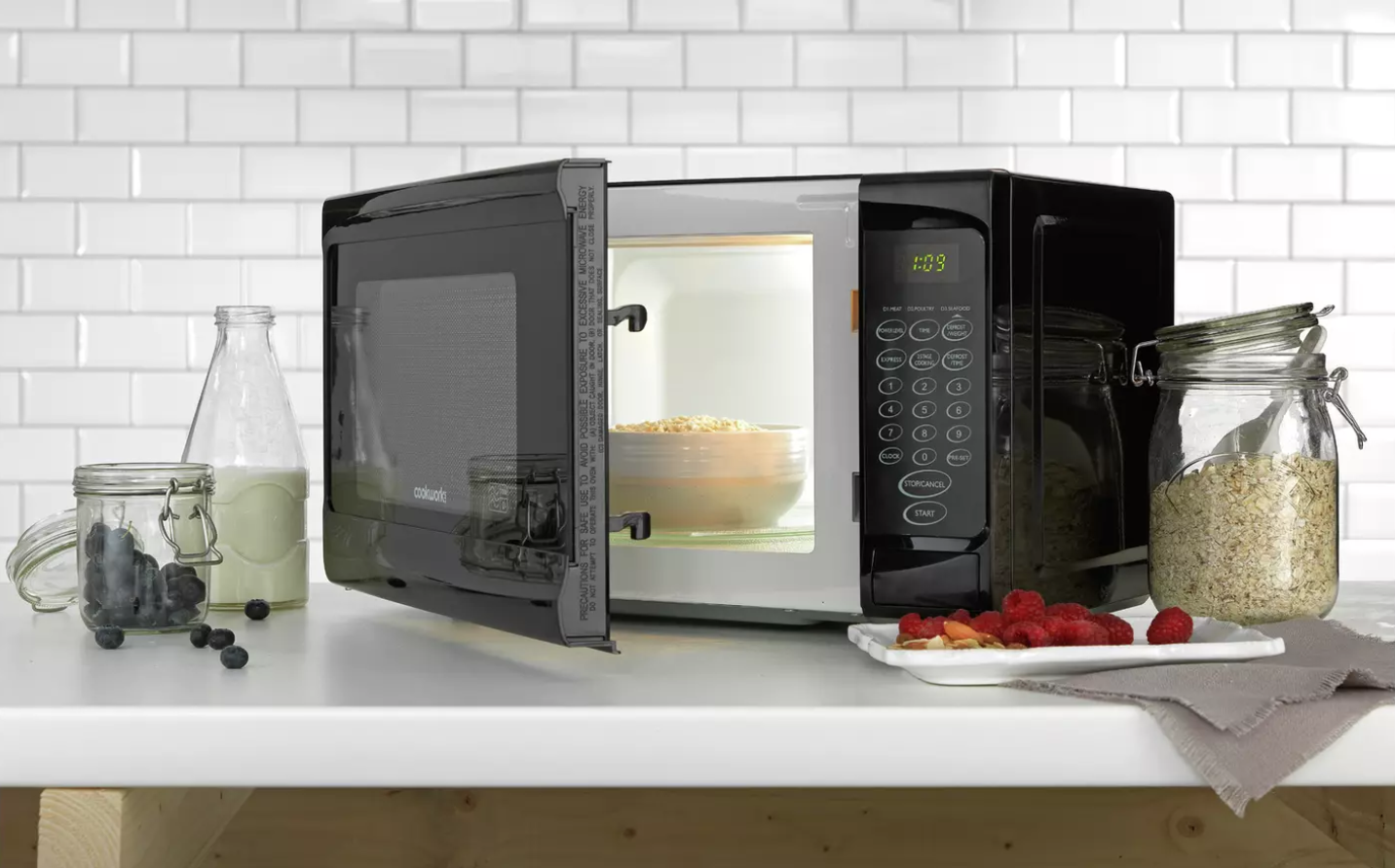
Microwaves play a big role in our kitchens due to their convenience in helping us heat and cook meals. In 2018, it was reported by Statista that 93% of households in the UK owned a microwave. With it being an almost essential item in our kitchen it is important we know how to look after it. In this article, we have highlighted areas often overlooked in the cleaning and maintenance of microwaves.
Wiping Away Condensation
Naturally, condensation is likely to appear in your microwave after use. The amount of condensation that appears is dependent on the food you are heating up and the moisture it contains. You should always follow the heating instructions for different foods and, where possible, you should ensure you are covering the food in the microwave with cling film or in a microwaveable container. This not only helps the heating but prevents the moisture from escaping the food and circulating inside the microwave.
A build-up of moisture that is not treated leaves risk of the microwave developing cosmetic damage and the possibility of rusting to occur. The microwave should be wiped down after each use, taking care to wipe away any condensation which may build on the interior walls and around the door frame. After each use, we would recommend keeping the door open. This is to allow air to circulate inside the microwave and help to evaporate any condensation.
Positioning & Ventilation
When positioning your microwave, you should always ensure it is positioned on a level, flat surface and you follow guidance of the space that should be left around it. Each microwave is different, but generally, it is advised to allow clear space around the top and sides, especially the vent area. Another way to keep the vents clear is by gently wiping the vents using a soft cloth, hot water and soap. This is to remove any dust, debris, or grease that may build up on the vents. This will allow the air to circulate effectively and prevent the appliance from experiencing performance-related issues
Turntable Support
The turntable support and the turntable are the parts of the microwave you will be familiar with as the part that rotates the food. As food is put on a plate on top of this, it is possible for food to fall off and drop beneath it. A build-up of food debris can affect the turning mechanism and may also result in noisy vibrations, as the turntable is struggling to turn. You should remove the turntable support to clean this, and also clean in the crevice which the support sits in.
Wave Guide Covers Explained
Another part to take care in cleaning is the wave guide cover. Wave guide covers are an important component in microwaves and significant in the functionality of the unit. Even if you do not know what it is, it is likely something that you have seen whenever you have used a microwave. The wave guide cover is a small metallic-like cover and can be found on the right side of the interior of the microwave. The cover itself is typically made from a group of minerals named mica, which has highly reflective properties. The purpose of this is to help transmit microwave radiation by distributing the waves and heating the food evenly throughout. It also prevents steam and other particles from meeting the internal components within the microwave.
If the wave guide cover has not been maintained correctly or has suffered some damage, this can affect the performance of the microwave. You may notice sparking or physical issues with the interior, such as the microwave sides arcing. The reason for this sparking is usually due to food particles making contact with the heat from the magnetron in the microwave.
The best way to clean and maintain the microwave and the wave guard cover is by gently cleaning them. This can be done by heating up a bowl of water and lemon slice in the microwave. The steam produced will loosen any debris and this can be gently wiped with a cloth and dried. It is recommended to wipe microwaves down after each use, especially if there appears to be any food on the walls of the microwave after heating. If the wave guide cover becomes damaged or broken, it is strongly recommended to replace this. You can find replacement wave guide covers from various retailers online by either brand, model or universal fitting parts.
Summary
By following our thorough maintenance advice, you can keep your microwave clean and minimise the risk of issues occurring. As always, refer to the user manual for more information and guidance for your appliance.